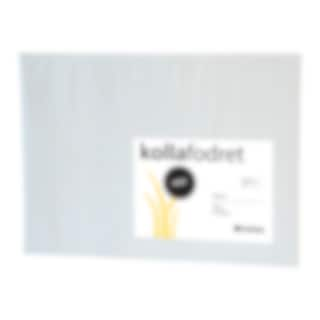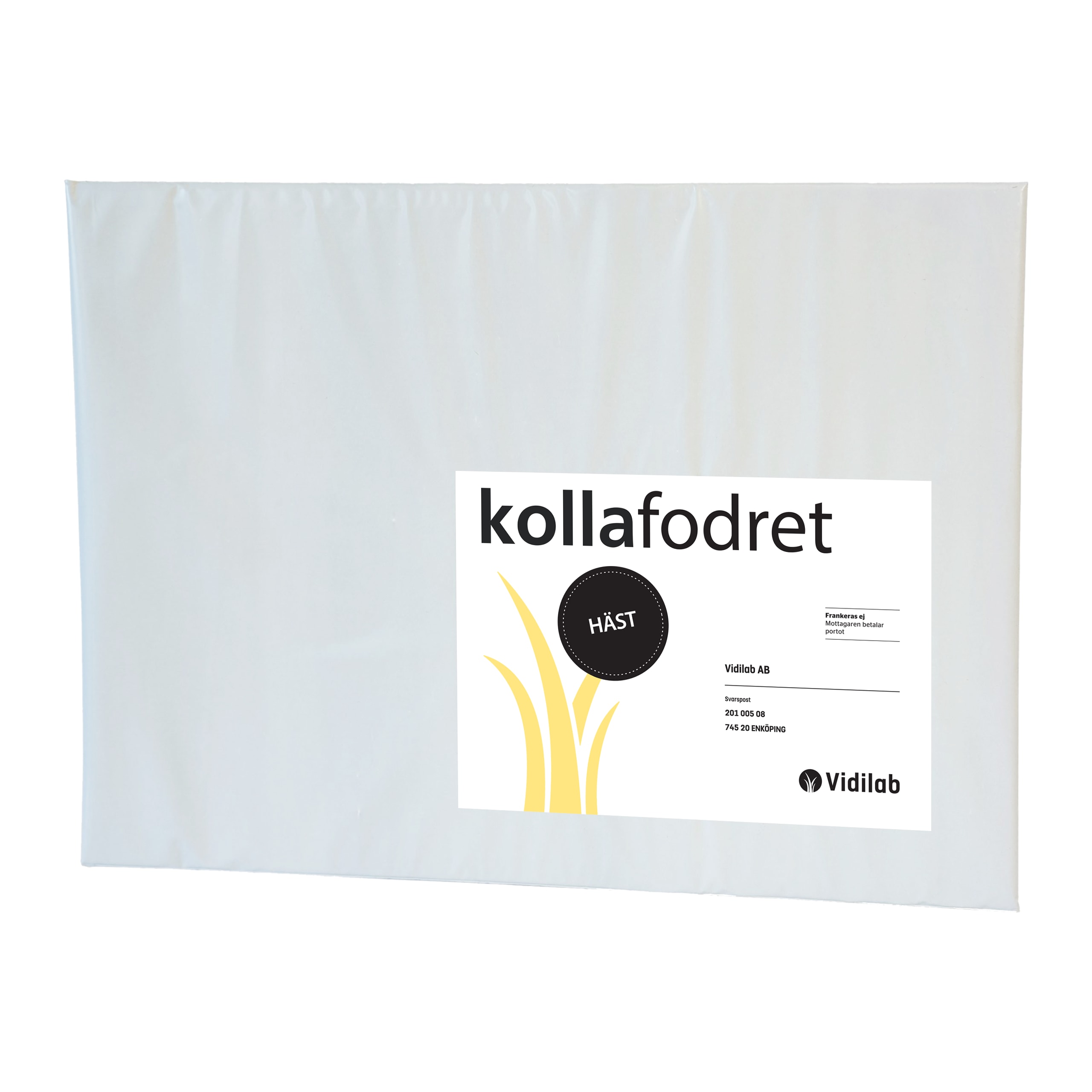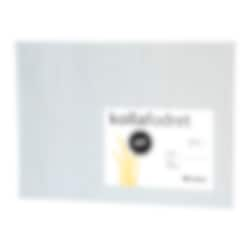Vidilab
Forage Analysis
Product description
Terms & Conditions
Here we offer you the opportunity to quickly and easily sample your forage and send it to Vidilab in a prepaid bag and envelope.
Kollafodret Horse is a sampling kit for forage analysis and includes the following:
- Delivery note
- Sampling bag
- Instructions
The forage analysis includes the following:
Nutritional analysis:
- Dry substance
- Crude protein
- NDF (neutral detergent fiber)
- WSC (total sugar)
- Metabolizable Energy, Horse
- Digestible crude protein
- Ratio of digestible crude protein to metabolizable energy, Horse
How do you take the sample?
You are always responsible for ensuring that the sample is representative. It is advisable to take samples from several bales to obtain variation in the batch and then combine them into a larger sample that represents the entire lot. Do NOT shake the hay before placing it in the bag or pull out strands from a hay bale that has not been properly opened. Much of the nutrients are in the leaves, and if they are shaken or removed before the sample is submitted, primarily stems will be analyzed, likely resulting in a lower nutrient value than what is actually in your forage.
Remember that it is VERY important for the sample to be cut into appropriate pieces, a maximum of 5 cm. Uncut samples will incur an additional sample preparation fee.
Hay
Sub-samples should be taken from 5-10 locations within the batch or from at least 3-5 bales. The best way to sample baled hay is with a hay core sampler. With a hay core sampler, you can drill at least half a meter into the hay and extract samples without losing leaf material. Loose hay should be taken from each load during the stacking process.
Silage/Hay silage
When sampling from a clamp silo or large bale, it is most appropriate to use a coring tool. If a corer is not available, it is also acceptable to take samples by hand; cut samples from the end of square bales or from the round side of round bales. From a clamp silo, at least two samples should be taken with a few meters in between, possibly from multiple locations in larger silos. To obtain a representative sample, drill all the way down and collect material from the different drill holes.
If there is a low feed consumption, samples can be taken from opened bales and stored in the freezer until samples have been collected from 3-5 bales. To maintain good silage quality, it is important to clean and maintain good hygiene around the areas where the drill holes will be made. It is also essential to clean around the hole immediately after drilling and to seal it with repair tape.
Pack your sample correctly
1. Collect approximately 5 liters of material from the various sub-samples and mix thoroughly in a clean container or plastic bag. We need at least 2 liters (about 200-300 g).
2. If the sample is not taken with a corer, mix the sub-samples and cut them into appropriate lengths, a maximum of 5 cm, so that everything fits into the accompanying zipper bag. Press out the air before sealing the bag and flatten it so that the shipment can fit through a mail slot.
3. Label the sample with appropriate information and fill out the accompanying slip with your name, address, material, sampling date, etc.
4. Place the sample bag and the accompanying slip in the pre-paid packaging. If you are unable to mail it on the sampling day, store the sample in the freezer.
5. It is best to send the sample on a Monday or Tuesday to avoid potential delays in mail delivery and to ensure a quick analysis response.


